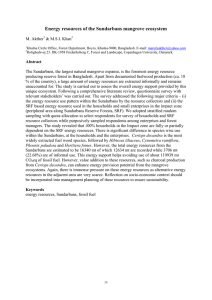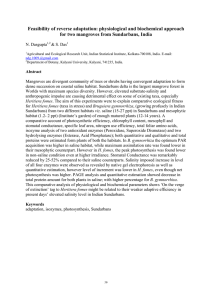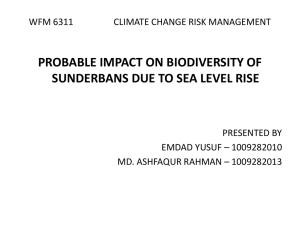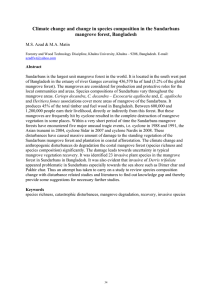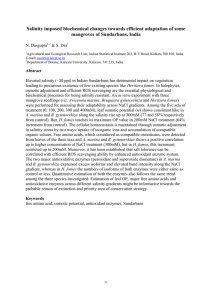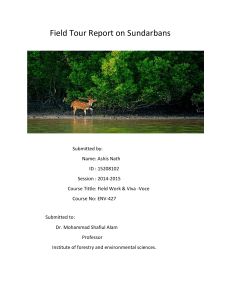Status of mangroves of the Sundarbans: some ecological observations M. Ghose
advertisement
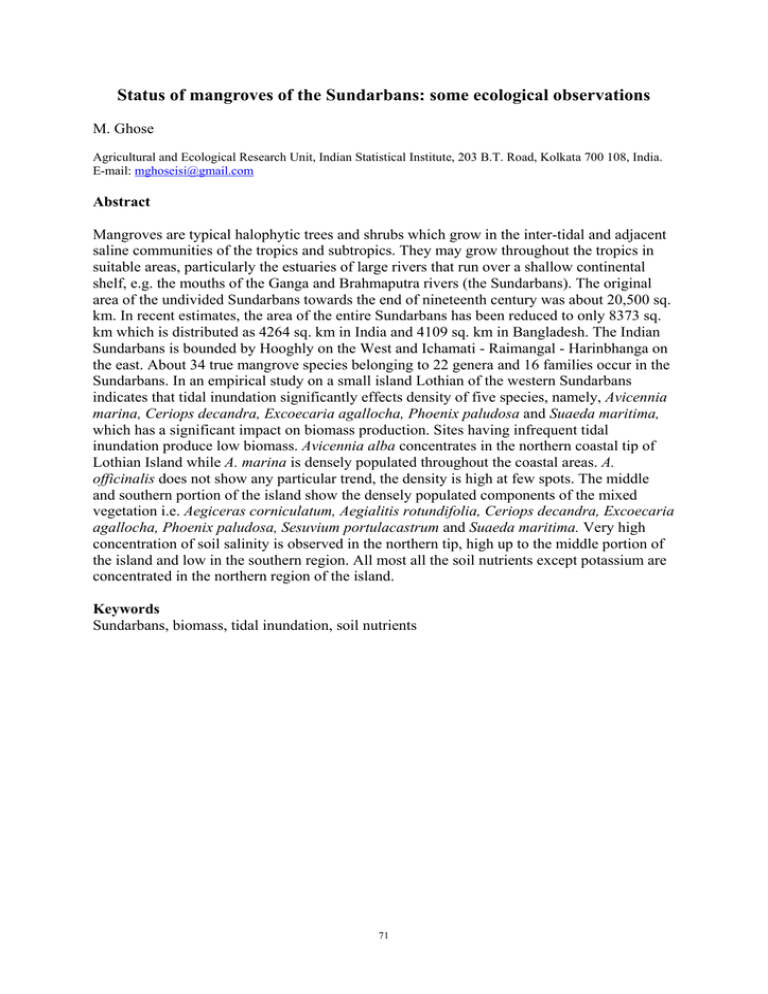
Status of mangroves of the Sundarbans: some ecological observations M. Ghose Agricultural and Ecological Research Unit, Indian Statistical Institute, 203 B.T. Road, Kolkata 700 108, India. E-mail: mghoseisi@gmail.com Abstract Mangroves are typical halophytic trees and shrubs which grow in the inter-tidal and adjacent saline communities of the tropics and subtropics. They may grow throughout the tropics in suitable areas, particularly the estuaries of large rivers that run over a shallow continental shelf, e.g. the mouths of the Ganga and Brahmaputra rivers (the Sundarbans). The original area of the undivided Sundarbans towards the end of nineteenth century was about 20,500 sq. km. In recent estimates, the area of the entire Sundarbans has been reduced to only 8373 sq. km which is distributed as 4264 sq. km in India and 4109 sq. km in Bangladesh. The Indian Sundarbans is bounded by Hooghly on the West and Ichamati - Raimangal - Harinbhanga on the east. About 34 true mangrove species belonging to 22 genera and 16 families occur in the Sundarbans. In an empirical study on a small island Lothian of the western Sundarbans indicates that tidal inundation significantly effects density of five species, namely, Avicennia marina, Ceriops decandra, Excoecaria agallocha, Phoenix paludosa and Suaeda maritima, which has a significant impact on biomass production. Sites having infrequent tidal inundation produce low biomass. Avicennia alba concentrates in the northern coastal tip of Lothian Island while A. marina is densely populated throughout the coastal areas. A. officinalis does not show any particular trend, the density is high at few spots. The middle and southern portion of the island show the densely populated components of the mixed vegetation i.e. Aegiceras corniculatum, Aegialitis rotundifolia, Ceriops decandra, Excoecaria agallocha, Phoenix paludosa, Sesuvium portulacastrum and Suaeda maritima. Very high concentration of soil salinity is observed in the northern tip, high up to the middle portion of the island and low in the southern region. All most all the soil nutrients except potassium are concentrated in the northern region of the island. Keywords Sundarbans, biomass, tidal inundation, soil nutrients 71
